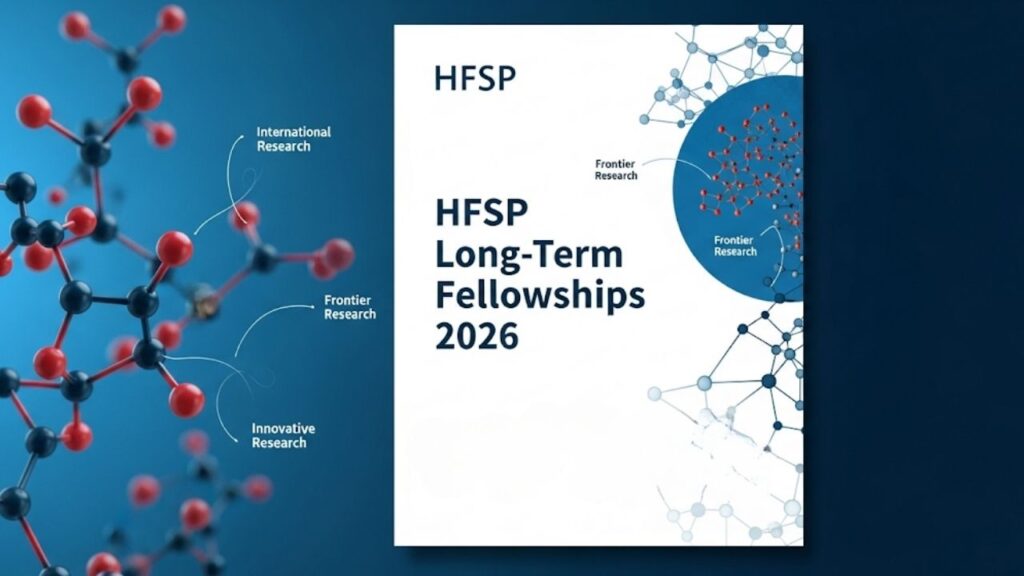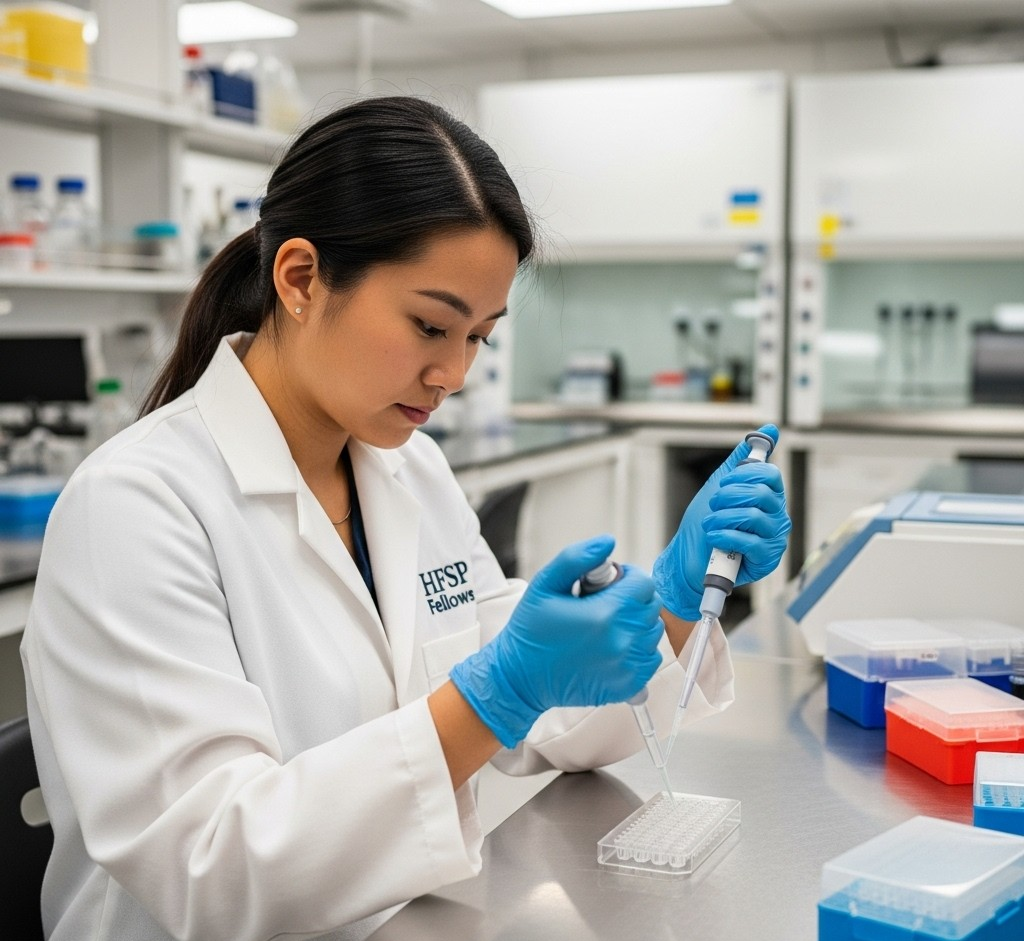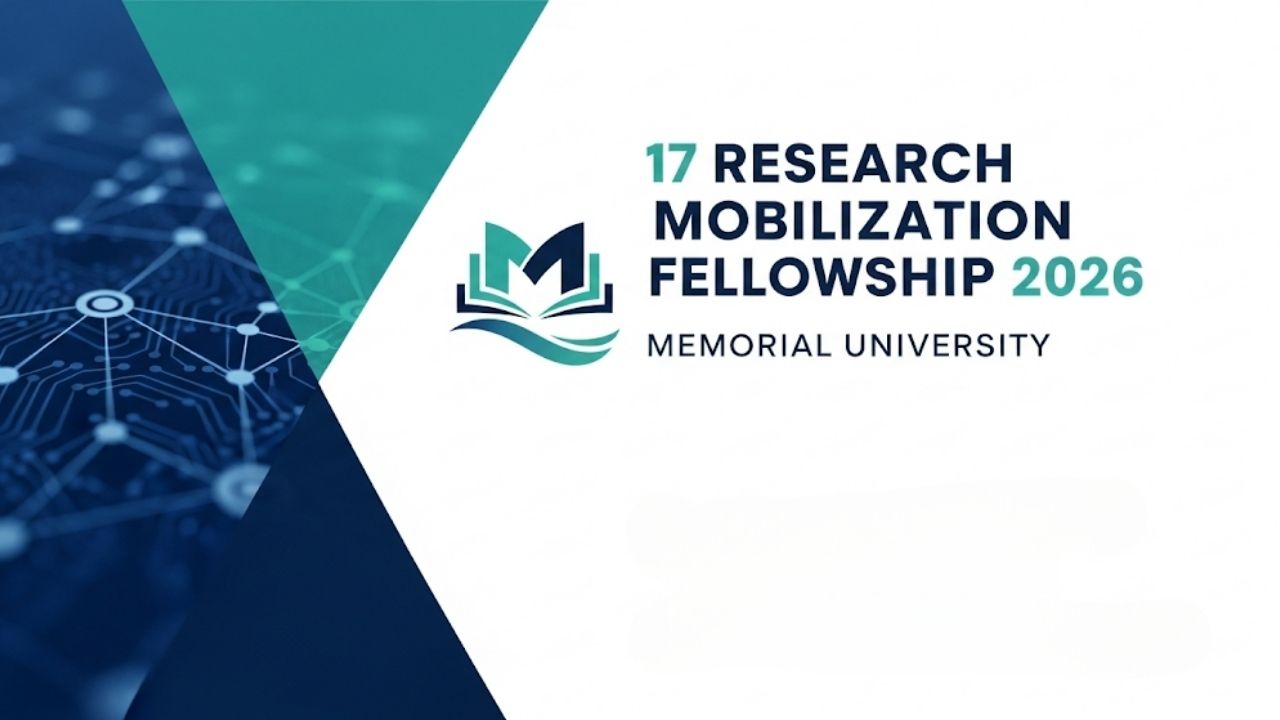Embarking on a postdoctoral journey is one of the most exciting and defining moments in a scientific career. If you’re an ambitious researcher aiming to push the boundaries of knowledge, the HFSP Long-Term Fellowships 2026 program should be at the very top of your list. This isn’t just another funding opportunity; it’s a launchpad for visionary scientists who dare to explore uncharted territories in the life sciences. This guide is designed to demystify the process, providing you with a clear, actionable roadmap to craft a compelling application for this world-renowned fellowship.

HFSP Long-Term Fellowships 2026
| Key Fact | Detail |
| Fellowship Focus | Supports novel, risky, and interdisciplinary research at the frontiers of life sciences. |
| Mobility Requirement | Applicants must propose to work in a country different from where they completed their PhD. |
| Eligibility Window | Applicants must have at least one first-author publication and a PhD defense date between Sept 1, 2022, and Sept 30, 2025 (check official site for exact dates). |
| Annual Stipend | Provides a generous living stipend, a research and travel allowance, and additional benefits like child and parental leave allowances for three years. |
| Submission Deadline | The Letter of Intent is typically due in mid-March, with the full application deadline in late May. |
Applying for the HFSP Long-Term Fellowships 2026 is a significant undertaking, but it is an unparalleled opportunity to pursue your most ambitious scientific dreams. It’s a call to be bold, to cross boundaries, and to contribute to a global community dedicated to fundamental discovery.HFSP Website.
What Makes the HFSP Fellowship a Career-Defining Opportunity?
The Human Frontier Science Program (HFSP) stands apart. Funded by an international alliance of countries, its mission is to promote basic research focused on the “complex mechanisms of living organisms.” What does this mean for you? It means HFSP champions the kind of high-risk, high-reward science that can lead to true breakthroughs.
Unlike traditional grants that may favor safer, more predictable projects, HFSP actively seeks proposals that are:
- Visionary: They want to see your most creative and ambitious ideas.
- Interdisciplinary: They encourage scientists from fields like physics, chemistry, mathematics, and engineering to apply their expertise to biological questions.
- Collaborative: The program is built on international mobility, fostering a global network of top-tier scientists.
Winning an HFSP fellowship is more than just securing funding; it’s a mark of distinction that signals you are among the most promising young researchers in the world. It tells the scientific community that you are a creative, independent thinker poised to become a future leader in your field.

Are You Eligible for the HFSP Long-Term Fellowships 2026?
Before you dive into crafting your proposal, it’s crucial to ensure you meet the specific eligibility criteria. HFSP is quite strict, so a careful check now will save you a lot of time and effort.
The Basics: Your PhD and Research Experience
First, HFSP Fellowships are for early-career researchers. To apply for the 2026 awards, you must have a research doctorate (PhD) or equivalent. Critically, you must have defended your thesis by a specific date, which is usually around late September of the application year. The program also has a rule about your prior postdoctoral experience, generally capping it at three years. You must also have at least one lead-author publication from your doctoral work, either published or accepted by a peer-reviewed journal.
The Mobility Rule: A Core HFSP Principle
This is a non-negotiable cornerstone of the fellowship. You must propose to conduct your research in a different country than the one where you received your PhD. Furthermore, you cannot have worked or lived in the proposed host country for more than 12 months in the three years prior to the submission deadline. This rule is designed to maximize the exchange of ideas and techniques across international borders.
There are some nuances. For example, if you obtained your PhD in an HFSP member country, you can propose to work in any other member country or in a non-member country. The official HFSP guidelines provide a detailed breakdown of these scenarios.
The “Frontier” Requirement: Bridging Disciplines
HFSP’s heart lies in “frontier” research. If your PhD is in a biological field, your proposed project should integrate techniques or approaches from outside biology—think physics, mathematics, or computer science.
Conversely, if your PhD is from a non-biological discipline (like engineering or chemistry), you must propose a project that tackles a fundamental biological problem. This cross-pollination of fields is where HFSP believes the most exciting discoveries are made.
Guide on How to Apply for the HFSP Fellowship
Navigating the application can feel daunting, but breaking it down into manageable steps makes it achievable.
Step 1: Conceptualize Your Groundbreaking Project
This is the most important step. Don’t just propose an incremental extension of your PhD work. Ask yourself:
- What is a major unanswered question in biology that fascinates me?
- How can I approach this question in a completely new way?
- What skills or perspectives from another discipline can I bring in?
In my experience advising applicants, the most successful proposals are those that tell a compelling story. They identify a clear gap in our knowledge and propose an elegant, creative, and bold plan to fill it. Spend weeks, or even months, brainstorming and reading literature outside your immediate field.
Step 2: Find and Secure a Host Laboratory
Your choice of host lab is critical. You need a Principal Investigator (PI) and an environment that not only has the necessary resources but also champions intellectual freedom and shares your vision.
- Identify potential labs: Look for leaders in the field you want to enter.
- Reach out early: Send a concise, professional email introducing yourself, your research interests, and your intention to apply for the HFSP fellowship. Attach your CV.
- Collaborate on the proposal: The best host PIs will actively engage with you, helping refine your research plan and ensuring it aligns with the lab’s capabilities.
Step 3: Crafting a Compelling Research Proposal
Your proposal is your platform to shine. It needs to be clear, concise, and exciting. The HFSP review panel is composed of world-class scientists who are reading many applications. You need to grab their attention from the first paragraph.
Focus on the “why” and the “how.”
- Why is this project important? Clearly articulate the significance and potential impact.
- Why is it novel and at the “frontier”? Explicitly state what makes your approach different and interdisciplinary.
- How will you do it? While the project can be risky, your proposed methods should be well-reasoned and feasible within the three-year timeframe.
Step 4: Assembling Your Application Package
The full application typically requires several components, including:
- Your detailed research proposal.
- Your curriculum vitae (CV).
- A description of the host laboratory’s research environment.
- A letter of support from your proposed host supervisor.
- Two letters of reference from other scientists who know you and your work well.
Choose your referees wisely. They should be able to speak to your creativity, independence, and potential for groundbreaking research. Give them plenty of notice and provide them with your proposal so they can write a strong, specific letter.

Step 5: Navigating the Submission Portal and Deadlines
The application process is entirely online through the HFSP’s proposal management system. Create your account well in advance to familiarize yourself with the interface. Do not wait until the last minute to submit. Technical glitches can happen, and you don’t want to miss this incredible opportunity because of a preventable error.
Your Ultimate Guide to the Nippon Foundation Fellowship 2026: Charting Your Course in Ocean Affairs
Your Definitive Guide to the Houghton Library Fellowship: How to Win a Coveted Spot at Harvard
FAQs
Q1:Can I apply if my PhD is in a non-biological field like physics or computer science?
Absolutely! This is actively encouraged. As long as you propose a project that addresses a fundamental problem in biology, your application is welcome. You must clearly explain how your expertise from physics or computer science will provide a novel approach to the biological question.
Q2:What is the success rate for HFSP Long-Term Fellowships?
HFSP is highly competitive. While official numbers vary year to year, the success rate is typically around 10-12%. However, this should not discourage you. A well-conceived, exciting, and clearly written proposal has a strong chance of being recognized.
Q3:Can I return to my home country with the fellowship?
No, the core mobility rule requires you to move to a new country for the duration of the fellowship. HFSP aims to foster international collaboration and prevent scientific “inbreeding” by having researchers train in new environments before potentially returning home with new skills and perspectives later in their careers.










